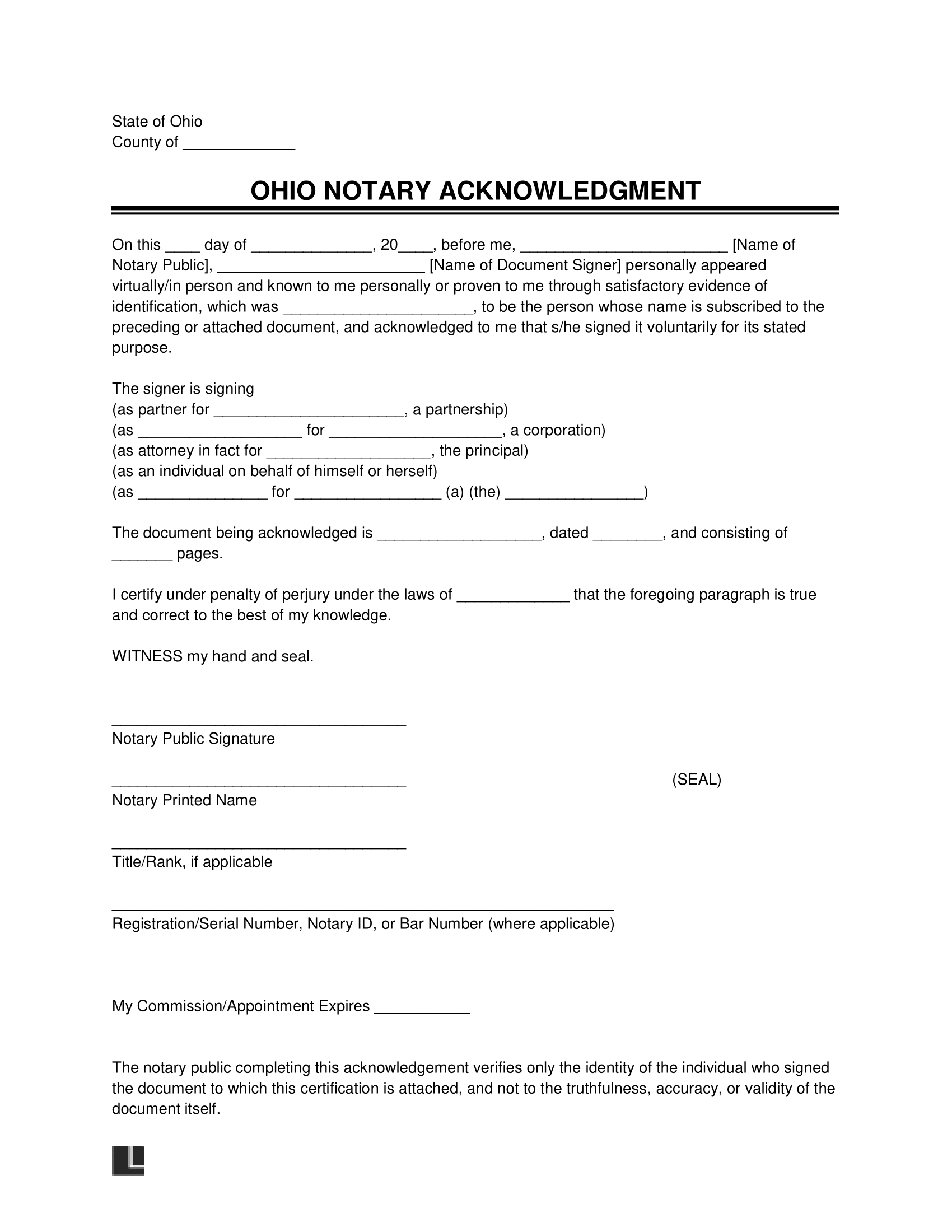An Ohio notary acknowledgment form is a crucial legal instrument for validating signatures on various documents, including mortgages, trust deeds, and living wills. It requires signers to voluntarily acknowledge their signatures, confirming their identity and intent.
The notary public, after ensuring each party’s identity with reasonable certainty, signs the form and applies their seal. When notarization is performed remotely, the form must specify that it was conducted electronically, maintaining the document’s legal validity. This process safeguards the integrity of significant legal documents by verifying that all parties have willingly participated in their execution.
Legal Considerations
Statute: Chapter 147 – Notaries Public and Commissioners.
Form of Acknowledgment: The acknowledgments described in § 147.55 are adequate and can be used for any purpose under any part of the Revised Code.
Notary Term of Commission: Five years (§ 147.03).
Notary Handbook: The Ohio Notary Public Handbook contains the required regulations on notary procedures and requirements of renewal. You can also view the Secretary of State Notary Page for more information.
Is Online Notarization Legal in Ohio?
Yes, the Notary Public Modernization Act was implemented on September 22, 2019, following the approval of Senate Bill 263. This legislation permits notaries who are legal residents of Ohio to conduct online notarizations, provided they are physically in Ohio at the time of notarization. It’s important to note that for remote notarizations, the signer is not required to be in Ohio.
The law governing electronic notarizations is Section 147.64 of the Ohio Revised Code.
How to Notarize
Step 1 – Finding a Notary Public
Notaries can be found through a UPS Store near you, banks like PNC and Huntington, or look through online directories for statewide notary locations.
Step 2 – Document Preparation
Before notarization, ensure all signature-required sections of the document remain unsigned.
Step 3 – Providing Identification
Show a valid identification to the notary unless the notary is already acquainted with the signer.
Step 4 – Document Signing
In the presence of the notary, sign the document, confirming the signature is made willingly.
Step 5 – Oath or Affirmations
For certain notarizations, such as jurats, the signer must swear or affirm the truthfulness of the document’s contents.
Step 6 – Completing the Notarization
The notary concludes the process by adding their signature and official seal. The signer’s in-person presence is essential for verifying identity.
How to Verify a Notary
- Visit the Ohio Notary Public search portal.
- Look up notaries using their first and last names.
- You can also specify if you would like an online notary or not.
- Choose a notary to view their commission details, expiration date, and area of commission.


